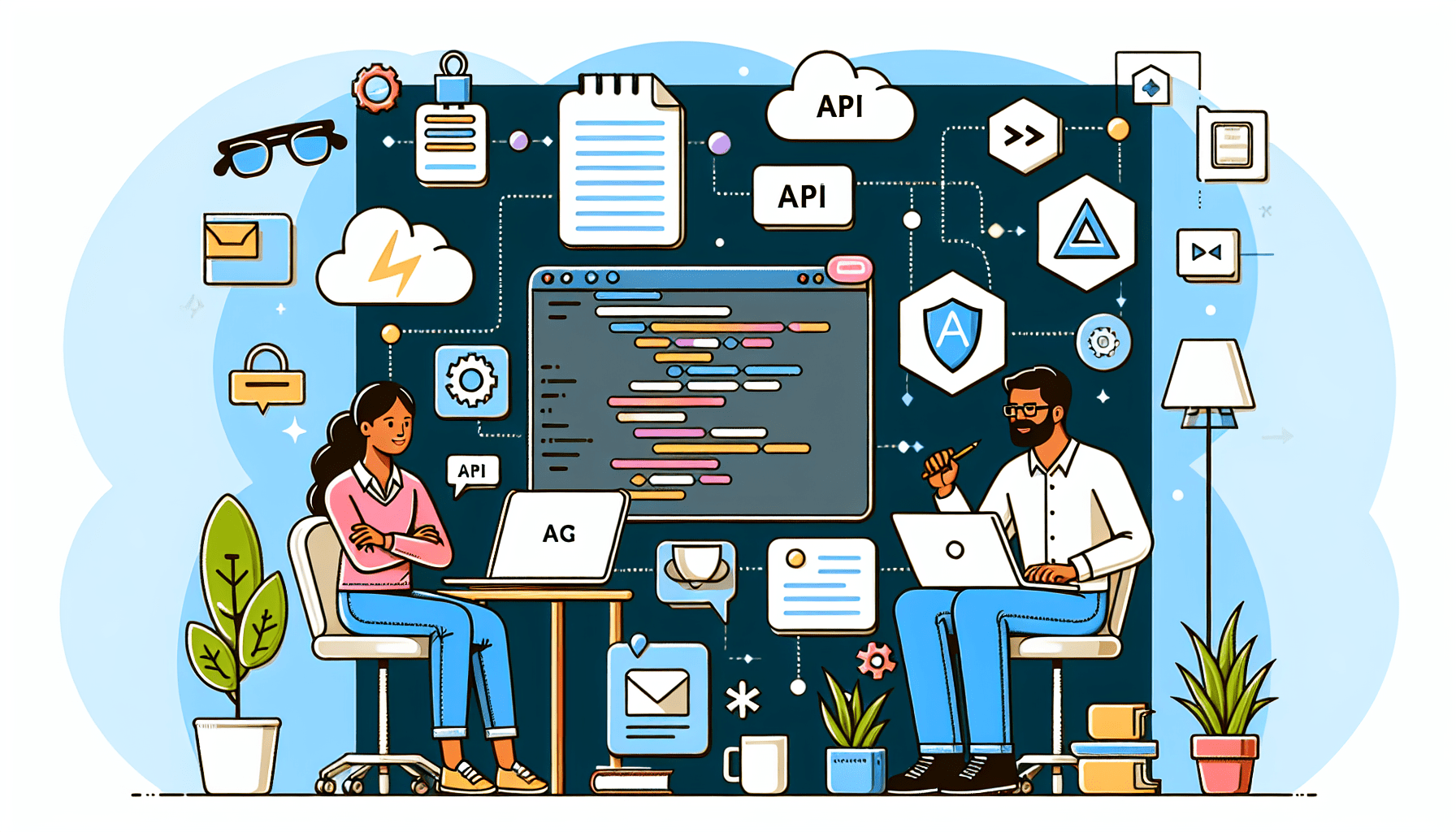Master AngularJS API Integration for Seamless Web Development

AngularJS API Integration
Integrating AngularJS with various APIs can significantly enhance the user experience by leveraging real-time data and dynamic content personalization. By tapping into external services, developers can create more responsive and tailored applications that cater to individual user preferences and behaviors.
This seamless integration allows for the efficient retrieval and manipulation of data, ensuring that each user interaction is as relevant and engaging as possible.
Hey! Interested in AngularJS API integration? Great selection! It’s a sensible option to accelerate your net growth. Imagine it like giving your net apps a turbo-enhance. Let’s soar in and discover ways to grasp this ability enjoyably and efficiently.
Why AngularJS API Integration Matters

AngularJS stands out in the web development world for its ability to create dynamic, single-page applications that are both efficient and scalable. By integrating APIs, you’re essentially hooking up your AngularJS applications to external services and data sources, which can significantly enhance functionality and user experience.
It’s like connecting your app to a vast library of resources, where each API call retrieves a book filled with the exact information you need at that moment. With this approach, you can build feature-rich applications that are tailored to your users’ needs, making it a must-have skill in your developer toolkit.
When developing web applications, prioritize speed, sustainability, and user-friendliness. API integration plays a crucial role. By linking your app to various APIs, you can seamlessly incorporate features such as data retrieval, user authentication, and more without building them from the ground up.
Real-World Example: The Weather App
To illustrate the power of API integration, consider a weather app that provides personalized forecasts. By connecting to a weather data API, the app can pull real-time meteorological information from global databases, ensuring users receive up-to-date and accurate predictions tailored to their location.
Furthermore, integrating a user preferences API allows the app to remember individual settings and alerts, creating a truly customized experience that anticipates the user’s needs and interests.
Create a basic weather app. Instead of entering weather details by hand, connect a weather API. This lets your app get live weather information from a trusted source automatically. Exciting, right?
Getting Started with AngularJS API Integration
Step 1: Set Up Your AngularJS Environment
Once you have your AngularJS environment ready to go, it’s time to dive into the world of APIs. You’ll need to choose a weather API that suits your needs—there are several free and paid options available, each with their own set of features and limitations.
When selecting an API, consider the ease of integration, the update frequency of weather data, and the level of detail provided. With the right API in hand, you’ll be well on your way to creating an app that keeps users informed and prepared for whatever the skies have in store.
Before beginning integration, be sure that your AngularJS setup is appropriate. If you are new to this, try the numerous online tutorials and guides.

Step 2: Choose the Right API
Once you’ve confirmed that your AngularJS environment is properly configured, it’s time to select the right API for your weather app. The choice of API can make or break your application, as it must provide accurate, up-to-date meteorological data that your users can rely on.
Look for an API that offers a comprehensive range of weather information, including forecasts, current conditions, and severe weather alerts, ensuring that you can deliver a full suite of features to keep your audience engaged and informed.
Not all APIs are the same. Choose one that fits your goals. For example, if you’re building an e-commerce app, consider using payment gateways like Stripe or PayPal.
Tip Box:
🟢 Pro Tip: When it comes to AI personalization, the key is to integrate systems that learn from user interactions. This means selecting APIs that not only handle transactions but also track user preferences and behaviors.
By doing so, you can create a more tailored experience, whether that’s recommending products based on past purchases or customizing content to match user interests.
Remember, the more your app understands its users, the more valuable it becomes to them. Always learn the API documentation. It’s your greatest good friend when integrating APIs.
Step 3: Integrate the API with AngularJS
Integrating APIs with AngularJS requires a hands-on approach and a clear understanding of both your data needs and the framework’s capabilities. Begin by injecting the necessary services and setting up your controllers to handle the API data appropriately.
Ensure that you structure your promises and callbacks effectively to maintain a responsive user experience, even when dealing with asynchronous data flows.
By doing so, you’ll be able to seamlessly weave AI personalization features into your app’s fabric, making each interaction feel uniquely tailored to the individual user.
This is the place where the magic occurs! Use AngularJS companies to hyperlink your app to the API you select. You’ll make HTTP requests and deal with responses. It would possibly sound technical; nevertheless, it’s easier than it appears to be.
Step 4: Test Your Integration
Once you’ve linked your application with the chosen API using AngularJS services, it’s crucial to rigorously test your integration. This step ensures that the personalization engine functions seamlessly, providing a tailored experience to each user without any hitches.
You’ll want to simulate various user interactions and monitor the system’s responses, verifying that the data handling and UI updates meet your expectations for a smooth and intuitive user experience.
Testing is crucial. Ensure seamless operation and confirm that your app connects with the API as intended. Though it may require some trial and error, this step is vital.
Case Study: Successful API Integration

AngularJS API integration
To illustrate the power of effective API integration, consider a case study involving AngularJS. A development team was tasked with creating a dynamic web application that could provide personalized content to users based on their preferences and behaviors.
By integrating a robust AI personalization API with their AngularJS framework, they were able to leverage machine learning algorithms to analyze user data and deliver a customized experience.
The result was a significant increase in user engagement and satisfaction, demonstrating how seamless API integration can elevate the functionality of an application.
Let me inform you of a few good friends of mine, Sam. He constructed a journey blog and needed to point out maps and places. By integrating the Google Maps API, he allowed customers to see routes and landmarks straight on his website. It was a game-changer for consumer engagement!
Final Thoughts
But Sam didn’t stop there. Recognizing the power of personalization, he implemented AI-driven recommendations that suggested custom itineraries based on visitors’ past interactions and preferences.
This level of personal touch not only made his blog stand out from the crowd but also significantly increased the time users spent exploring his content, turning casual readers into loyal followers.
Mastering AngularJS API integration can elevate your net growth sport. With Apply, you will discover it turns into a pure part of your workflow, opening up countless potentialities for your initiatives.
Call to Action:
To truly harness the power of AI personalization, it’s essential to keep the user at the forefront of your design process. By tailoring your AngularJS applications to adapt to user preferences and behaviors, you create a seamless and intuitive user experience.
As you integrate more sophisticated AI algorithms, your applications not only respond to user input but also anticipate needs, setting the stage for deeper engagement and increased user satisfaction.
So, dive into the world of AI personalization; your users will thank you for a digital experience that feels like it was crafted just for them. Ready to remodel your net growth course? Start integrating AngularJS APIs right now and see the distinction!
External Links
Incorporating AI personalization doesn’t just enhance user engagement; it also streamlines your service offerings to meet individual needs with precision. By leveraging data-driven insights, you can tailor content, recommendations, and even user interfaces to resonate with each visitor’s unique preferences and behaviors.
This level of customization not only bolsters user satisfaction but also drives conversion rates, as personalized experiences are far more likely to align with your users’ desires and expectations.
Embrace the power of AI personalization, and transform your digital platform into an intuitive, adaptive environment that anticipates and fulfills the needs of every user. Keep your content updated to stay relevant. Enjoy coding!




Thanks for sharing. I read many of your blog posts, cool, your blog is very good.
I don’t think the title of your article matches the content lol. Just kidding, mainly because I had some doubts after reading the article.
Thank you for your sharing. I am worried that I lack creative ideas. It is your article that makes me full of hope. Thank you. But, I have a question, can you help me?
I cherished up to you’ll obtain performed right here. The sketch is tasteful, your authored subject matter stylish. however, you command get got an nervousness over that you want be turning in the following. unwell unquestionably come more previously again as precisely the same just about a lot often inside of case you protect this hike.
After all, what a great site and informative posts, I will upload inbound link – bookmark this web site? Regards, Reader.
Thanks for sharing. I read many of your blog posts, cool, your blog is very good.